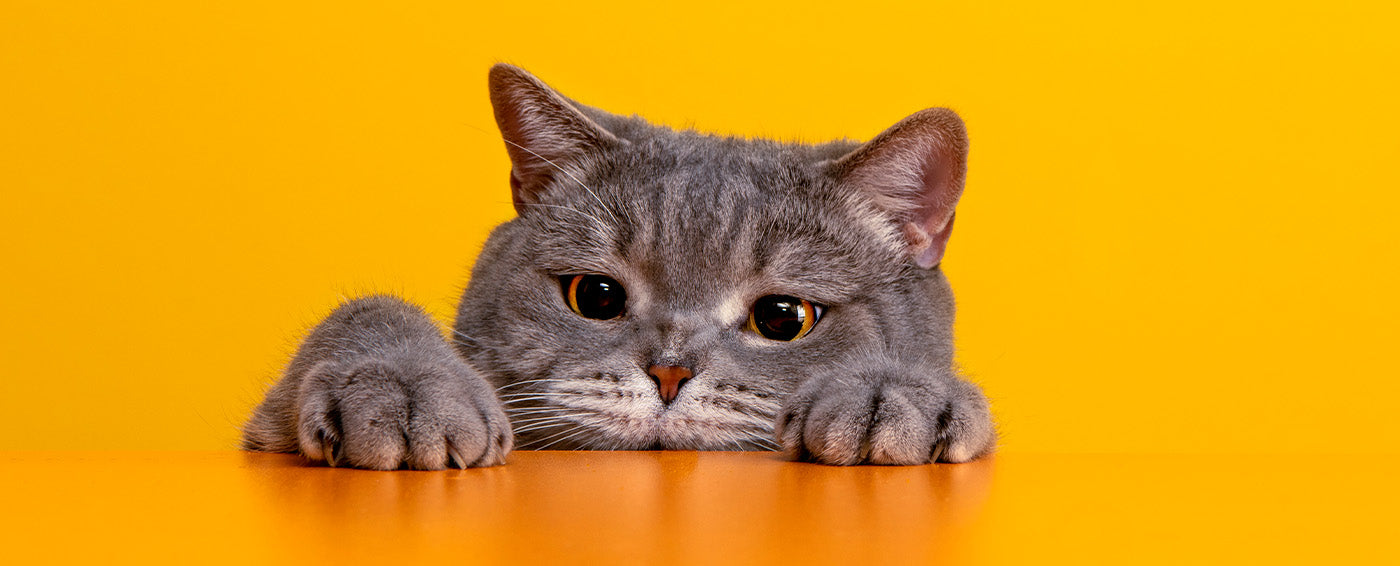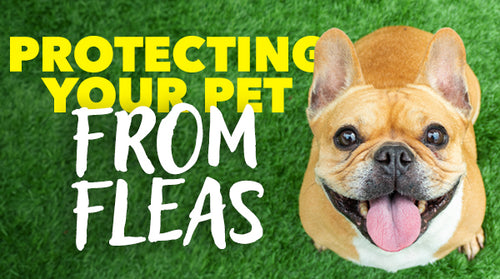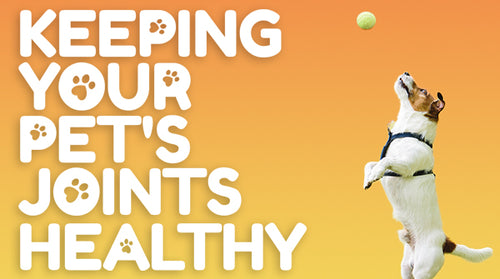During a hectic day, have you ever looked at your cat napping or dog playing and thought, “Now that’s the life—no problems, no worries”?
If so, you might be surprised to learn that our furry friends actually do experience stress. What’s more, it often shows itself as behaviors we don’t appreciate, such as excessive yowling or barking.
“Stress is a big component of behavioral issues,” says cat behavior consultant Marilyn Krieger, CCBC, who practices as The Cat Coach.
The concern goes beyond inappropriate behavior, though. As is the case with their human companions, pets who are chronically stressed run a greater risk of becoming physically ill.
And as with people, each animal’s stress tolerance is different.
“You can have two littermates; one will be very well adapted to the environment and the other will be a nervous wreck. The difference is how they handle the stress factor,” says retired veterinarian Paul McCutcheon, DVM, coauthor of The New Holistic Way for Dogs and Cats (Penguin Random House).
Sometimes a pregnant mother’s environment can affect her babies’ behavior.
“The development of the physiological systems involved in the stress response starts before a kitten is even born and if the mother is stressed during pregnancy or receives poor nutrition, her litter may be more prone to developing stress,” notes International Cat Care (ICC), a British cat welfare agency.
Fortunately, there are ways to address your friend’s distress…and that can make life easier for you both.
Signs of Stress in Pets
Here are some ways your dog or cat may be trying to tell you something’s wrong. It’s important to be familiar with your pet’s normal behavior so that you can tell when something’s amiss.
Signs of Stress in Dogs
Constant barking is only one way your dog may show stress. Others include:
Aggression, including biting. Nipping and play-biting are normal in puppies, and they should be trained out of these behaviors (the American Kennel Club offers pointers here). However, signs of actual aggression—including lip curling (as opposed to merely showing teeth in play), snarling and lunging—can signal a dog under stress. Dogs may also show aggression as submission: “When your dog freezes or gets stiff, they are often stressed about something they see,” says the AKA. What may actually be happening is that your friend is shutting down, “a warning sign the dog is so stressed that they can’t handle the situation, and the next step may be a bite.”
Body language. The way your dog holds himself can hold clues to his mental state. If he “shifts his weight to his rear legs or cowers, he may be exhibiting stress,” say Malcolm Weir, DVM, MPH, and Lynn Buzhardt, DVM. “When scared, dogs may also tuck their tails or become quite rigid.” Other stress signals include ears pinned back against the head, drooling, lip-licking, pacing, panting and yawning. Your dog may exhibit “whale eye,” in which the white part of the eye is showing; in some cases the pupil may be dilated and the dog may blink rapidly.
Digestive/appetite issues. As with people, stressed dogs may suffer from gastrointestinal issues such as diarrhea and constipation. They may also start refusing food. (Some dogs will shed excessively.)
Hiding or avoidance. “When faced with an unwelcome situation, dogs may ‘escape’ by focusing on something else,” such as sniffing the ground, note Weir and Buzhardt. “Some tense dogs literally move behind their owners to hide, or may even nudge their owners to prompt them to move along.”
Vocalization. Constant barking isn’t the only vocal sign of a dog in distress. “Growling is an obvious way to tell if your dog is uncomfortable,” says the AKA. “It could mean that someone is in their space, they feel threatened or that something hurts.” Whining is another stress signal.
Signs of Stress in Cats
When faced with an immediate threat, cats will go into a pronounced crouch with their ears flattened and pupils dilated; they may growl or hiss. That sort of stress is easy to spot.
However, cats tend to be stoic in the face of chronic stress (including the stress of feeling ill), which can make discovering the source of their discomfort a challenge. Possible feline stress behaviors include:
Aggression, including redirected aggression. Using your hands to play-fight a tiny kitten can be fun; having a fully grown cat swiping at you because she never learned any better, not so much. What’s more, cats want to defend their territory. If there are ferals in your area, seeing these unwelcome intruders through the window may rile your indoor cats, causing them to take out their frustrations on each other…or you.
Appetite changes or eating nonfood items. Some cats go off their feed when stressed, while others, like some people, tend to overeat. Another sign of stress in cats is pica, or the urge to eat such non-food items as cardboard, paper or plastic. (Some cats will also groom excessively, to the point where they develop bald spots.)
Eliminating outside the litterbox. A dirty box is the most common reason kitty will find another place to take care of business, but unwanted elimination can also be caused by stress. In a multi-cat household, this may take the form of spraying, the marking of a wall or other vertical surface with urine.
Jumpiness or withdrawal. Some stressed cats will jump at the slightest noise; others tend to hide, often in the smallest spaces they can find (and where they feel safe). A cat in withdrawal may also show no interest in toys or play.
Vocalization. In addition to yowling, constant meowing can be a sign of stress, especially if you notice a marked increase in vocalization.
Why Pets Become Stressed
Pain or discomfort may cause your pet to act out—they can’t simply tell you, “I don’t feel good.” Any animal showing signs of stress should undergo a complete workup. (Note: Neutering or spaying will help make your pal easier to live with while also reducing his or her risk of developing certain types of cancer.)
If the vet can’t find any physical problems, you’ll have to look at other possible explanations for your pet’s behavior.
In some cases, a specific type of pet may not be a good fit for particular households.
“Say you have a Jack Russell Terrier living on the fifteenth floor of a building,” says McCutcheon. “It’s a little energy machine and if it isn’t exercised enough, that’s a real problem.”
Other dog breeds that require a lot of exercise include those in the working (think Siberian Husky), herding (Australian Shepherd) or sporting (retrievers, spaniels) groups. Some cat breeds also require more exercise than others, among them Bengals and Abyssinians.
In addition, some cats are known for their extreme chattiness, especially Siamese and such related breeds as Oriental Shorthairs. Yelling at the cat to be quiet isn’t likely to work, and will only serve to stress the animal. Among dogs, Beagles, Chihuahuas and the various terrier breeds tend to indulge in what you may deem excessive barking.
Other possible sources of stress include the following.
Your circumstances. Has there been turmoil in your own life? Your dog or cat may be picking up on that energy. “I hate to tell you the number of people I saw whose pets had a lot of health problems and said things like, ‘I’ve just been through a nasty divorce’ or ‘My husband just walked out,’” says McCutcheon.
Poor early socialization. Sometimes an animal may become stressed as an adult if he or she wasn’t exposed to a variety of situations while young. As the ICC notes, “A lack of early opportunities to experience the sights, sounds and smells of a typical domestic home environment may result in life being very challenging later on.”
Traumatic experiences. Both dogs and cats can be subject to post-traumatic stress disorder (PTSD) if they are coming from hoarder situations or other upsetting circumstances. Like their human counterparts, retired military dogs can develop PTSD in response to combat-zone conditions.
Loud noises and weird (to them) smells. Dogs and cats have much sharper senses of hearing and smell than we do. That means noises you find irritating may be borderline painful to them, and smells you may enjoy, such as essential oils, may be off-putting.
Too little, or too much, routine. Pets can also become stressed when their routines are interrupted, particularly if a new companion (human or animal) joins the household. On the other hand, routines can become ruts, leading to stress that results from boredom.
Separation anxiety in dogs. Dogs are pack animals—they are happiest in the presence of their fellow pack members, including you. This explains why some dogs will show separation anxiety; leave them alone in the house and you may come back to scattered garbage and chewed furniture.
Inter-cat hostility. As more solitary animals, cats can adapt to social living but may become stressed if they feel their access to resources is being threatened by feline housemates. “Imagine if you have five cats with one litter box and one says to the others, ‘You’re not going in there’; the other cats urinate somewhere else,” says Melissa Bain, DVM, DACVB, DACAW, of UC Davis Veterinary Medicine in California.
Unwanted handling in cats. You may also be upsetting your cat through your own actions. “Some owners can be intrusive physically in the way they behave, wanting more contact with their cats than is reciprocated,” says the ICC.
Sometimes it isn’t one big source of stress that upsets an animal…just the accumulation of many little ones.
“One stressor may not mean a lot, but a bunch stacked up can make for a very unhappy cat,” says Danielle Bays of the Humane Society of the United States.
How to Relieve Your Pet’s Stress
The first step in helping your friend deal with stress is learning not to take objectionable behavior personally. “They don’t act out of revenge, nor do they intentionally try to irritate,” says Krieger.
Also, try to see the world through the animal’s eyes. As McCutcheon puts it, “Empathizing is the thing, trying to figure out how that pet feels.”
Here are some ways to help your dog or cat cope with stress.
Do not inadvertently reward unwanted behavior. If your dog is in a stressful situation, “find a quiet place for him to regroup,” advise Weir and Buzhardt. “Resist the urge to overly comfort him. If you want to pamper him with petting or treats, make him earn them first by performing an activity, such as sitting.” Same thing with cats; if kitty yowls at night, for example, handing out treats in an attempt to quiet her down means you’ll hear yowling every night afterwards.
Be consistent. Bain says people can stress their dogs by being inconsistent: “They don’t know what to expect—for example, one person allowing the dog on the couch, the other not allowing it.” Cats also crave consistency; as Krieger puts it: “The cat wants to be fed at the same time every day, played with the same time every day.” The ICC adds, “Being predictable in your behavior and creating daily routines is a great stress buster.”
Use exercise to release pent-up energy. Even a relatively low-key dog needs to be walked, and all dogs enjoy playing with their humans. And don’t forget kitty; many cats can be enticed into play with feather wands and variations on the string-with-toy theme.
Think with your nose. If you love incense, for example, try to find a spot in the house where your pet doesn’t spend a lot of time. Also, avoid heavily scented detergents and cleaning products.
Create a safe zone. Cats appreciate covered beds, cat caves and other enclosed spaces where they can escape when feeling overwhelmed. For dogs, keep a favorite blanket and toy in a quiet area of the house where they can retreat during thunderstorms, parties and other stressful situations.
Introduce new animals gradually. Krieger says a new cat should first be “confined to one room where they feel safe and secure” before meeting other cats in the household. (A cat tree can add vertical territory for the cats to claim.) A slow pace also helps a new dog settle into the pack with a minimum of stress for everyone. In all cases, don’t leave newcomers alone with your existing crew until you’re sure everyone gets along well.
Handle gently, especially cats. A dog may enjoy rough-housing with you (or the kids), but most cats don’t appreciate that sort of play. Don’t force your affections, and watch for signs, such as pinned-back ears or a lashing tail, that indicate petting time is over. You should handle cats for short periods every day, however, to facilitate claw clips and other necessary contact; use treats and praise to gradually get them used to having their paws handled.
Use training to help dogs. Not only training for the animal but also guidance for the dog’s human companion. “We talk about consistent owner interactions so that the owner has a better relationship with the dog,” says Bain. “We talk about desensitization and counter-conditioning—a gradual re-exposure to the trigger that causes the dog to be stressed, but at a really low level.” (You can find a trainer through The Association of Professional Dog Trainers or the International Association of Canine Professionals.)
Learn why your cat is avoiding the litterbox. Keeping the box clean should go without saying, but you also want to know which type of litter kitty prefers and whether she’ll use a covered box or not—many cats won’t out of fear of being ambushed by another cat. In fact, the accepted rule of thumb is one box for every cat, plus one extra. (You may also want to have multiple feeding areas and cat trees so everyone can claim some territory.)
Make the cat carrier a safe space. Even placid cats will often fight getting into the carrier, especially if they associate the carrier with vet visits. Keep it out with a soft blanket inside so it becomes a comfortable hangout, and help that process along by occasionally throwing treats into it.
If traveling without your pet, try to avoid kenneling. Many cats do not make good travelers and greatly prefer staying in their own homes. And while dogs are generally more amenable to being placed in a kennel, that doesn’t mean they’ll enjoy the experience. Try to find a pet sitter who will visit your companion multiple times a day for feeding, exercise and companionship; you can start at the National Association of Professional Pet Sitters or Pet Sitters International.
Like this article? You’ll love our weekly newsletter
sign up here!
**These statements have not been evaluated by the Food and Drug Administration. This product is not intended to diagnose, treat, cure or prevent any disease.











































































